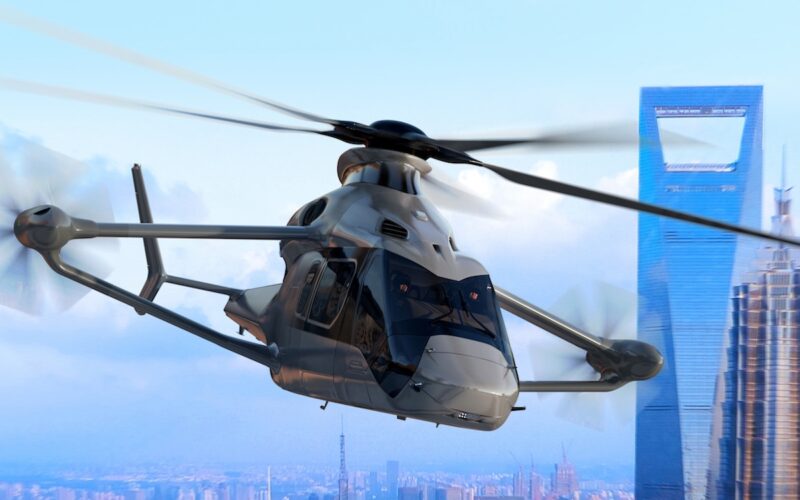Airbus Helicopters has revealed the livery for its new Racer (Rapid and Cost-Effective Rotorcraft) helicopter demonstrator.
This experimental rotorcraft is designed to achieve cruise speeds of up to 400 km/h, which is much faster than a conventional helicopter, while improving its environmental footprint and noise profile.
The Racer program has built upon the achievements of the Airbus X-3 demonstrator, another experimental helicopter which reached cruise speeds of up to 410 km/h (50% faster than a conventional helicopter) back in 2010.
Airbus Helicopters has fitted the Racer with a range of new technologies that will be tested in flight before the end of 2023.
These include a new box-wing design, a lightweight metallic-composite airframe, and a new high-voltage, direct-current electric generator.
But perhaps the most eye-catching features of the Racer are the structural ones, such as the double wings, fitted with lateral rotors, and the asymmetric cross-section profile of its rear fuselage.
The Racer is expected to reduce fuel burn per nautical mile by 15% compared to a conventional helicopter, even when flying faster (180 vs. 130 kts.). Its Safran Eco-Mode hybrid-electric system also makes it possible to easily switch off one of the Aneto-1X engines while in flight cruise mode, potentially resulting in an additional 30% fuel reduction.
The Racer is also expected to be quieter than current helicopter models.
This is just one of several projects Airbus is conducting in the field of optimized rotorcraft flight. In January 2023 another demonstrator, called DisruptiveLab, had its first flight.
DisruptiveLab is a flying laboratory that uses an H130 airframe as a test bank for a number of technologies geared towards a more fuel efficient and quieter rotorcraft flight. For example, it has a better integration of blades and rotor to reduce drag, a more aerodynamic aluminum and composite fuselage to reduce fuel consumption and a streamlined tail rotor with improved performance.
Prior to that, in 2021, Airbus Helicopters operated the so-called Flightlab, another demonstrator that tested several other technology improvements, particularly in the field of hybrid-electric propulsion, with a view to incorporating them into production helicopters as well as future eVTOL designs.

